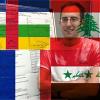.
S O U R C E (.PDF): SENS RESEARCH FOUNDATION
FROM THE CEO
At our 2013 conference at Queens College, Cambridge, I closed my talk by saying, “We should not rest until we make aging an absurdity.”
We are now in a very different place. After a lot of patient explanation, publication of scientific results, conferences, and time, our community persuaded enough scientists of the feasibility of the damage repair approach to move SENS and SENS Research Foundation from the fringes of scientific respectability to the vanguard of a mainstream community of scientists developing medical therapies to tackle human aging. Then we made the same case to investors and entrepreneurs; now, rejuvenation companies built on or inspired by our research are part of a robust ecosystem of basic science and biotech venture capitalists advancing the mission.
After serving on the board for ten years, it was great to join the team full time last fall.
While resources affect the pace of our progress, so do regulations and other government policies. So we began a lively dialogue with policymakers by inviting discussions of regulatory reform at our conferences and by hosting the Deputy Secretary of Health and Human Services, Eric Hargan, at our January health care event in San Francisco.
More and more influential people consider aging an absurdity. Now we need to make it one.
At SENS Research Foundation, we develop rejuvenation biotechnologies that will repair the accumulated cellular and molecular damage in our tissues and restore youthful vigor. As you’ll see in these pages, we made significant progress in 2019 toward strengthening immune systems, eliminating senescent cells, rejuvenating the neocortex, eliminating cells with rogue remains of ancient viruses, building backup copies to fill in for mutations in our mitochondrial DNA, and other fronts. And we launched some of our previous work into new pharma companies.
We responded to the SARS-CoV-2 pandemic in typical SRF fashion: we led the way with an early work-from-home policy and rigorous safety practices in our lab. As scientists around the world scrambled to understand what risk factors predict disease progression and death from the disease, we contributed what we had learned about the way the damage of aging — from immunosenescence to senescent cells and mitochondrial depletion — underlies the so-called comorbidities. Then we showed how rejuvenation biotechnologies could eliminate this damage by providing case studies of such interventions preventing and reversing similar pathology in experimental animals, as they potentially will for aging humans. As I write,six SRF Summer Scholars at the Sanford Consortium for Regenerative Medicine are generating brain and lung organoids to establish models to study SARS-CoV-2 infection and the resulting pathologies in those organs as well as investigate drugs to prevent or reverse the damage.
Our education program put creative young scientists to work in our Research Center and in top labs across America and Britain; and our outreach program taught thousands how metabolism leads to aging damage, which drives the pathologies of old age — and how reversal of that damage rather than mitigation of its consequences is the most practical and the most complete response.
Of course our progress depends entirely on the donors listed on the next page, especially the Forever Healthy Foundation, the Antonov Foundation, Vitalik Buterin, the Foster Foundation, James Mellon, Karl Pfleger, and the Dalio Family Fund.
Together, we are building the tools and knowledge to turn back the clock, rejuvenate humanity, and restore health.
.../...
.
Edited by Engadin, 15 September 2020 - 01:44 PM.
















































